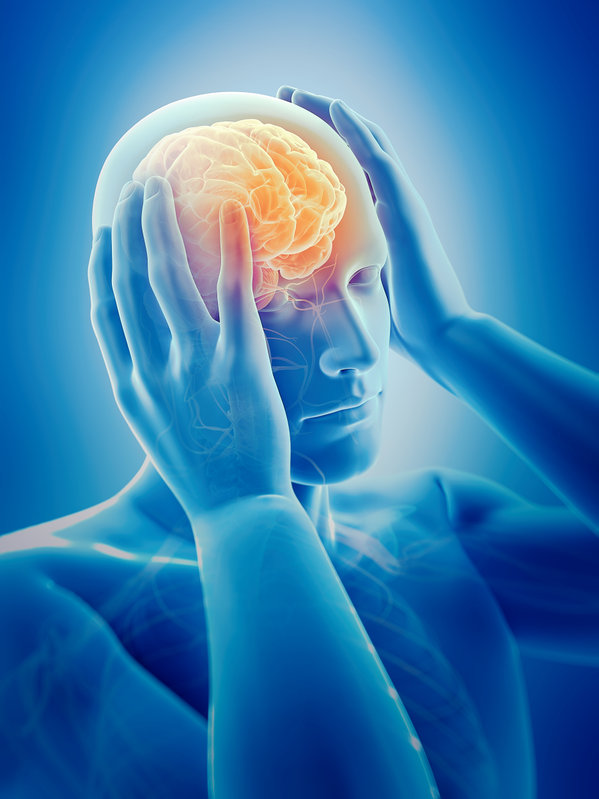Headache is a pain in any part of the head, including the face, scalp, and interior of the head. The pain is due to activation of the pain-sensitive structures around the brain, skull, face, teeth, or sinuses. It is the one of the most common types of pain seen in the correctional environment. Conditions like migraine and chronic headaches are sometimes associated with other morbidities, like depression.
Headache may present as a primary disorder, or as a secondary condition to another disorder. Primary headache disorders include tension-type headaches, cluster, and migraine headaches. Disorders causing secondary headache include extra cranial disorders (dental problems like infection and temporal mandibular joint dysfunction; carotid or vertebral artery dissection; sinusitis and glaucoma), intracranial disorders (brain tumor, Chiari malformation, Central Spinal Fluid (CSF) leaks, infection, hemorrhage and vascular disorders; systemic disorders like severe hypotension, bacteremia, fever, giant cell arteritis, hypercapnia, hypoxia and viral infections; and drugs and toxins (analgesia overuse, caffeine withdrawal, carbon monoxide exposure, hormones, nitrates and proton pump inhibitors).
Primary Headache
Representing about 90% of all headaches presenting to outpatient settings, primary headaches are those that are self-initiating. That is, they are not the result of another disorder. Of the primary headaches, tension-type is most prevalent, followed by migraine and then cluster.
It is very important that a secondary cause of headache be ruled out before a diagnosis of primary headache is made.
Tension Headache
Tension headache is the most frequently experienced primary headache. The pain of a tension headache is often described as a tightness, squeezing, soreness or pressure – like a band around the head. Research indicates that a tension headache is the result of increased muscle tension in the neck, face, or shoulders. It has been associated with stress, depression, anxiety, head injury, and holding the head in one position for an extended period, such as when using a computer. A tension headache may be triggered by sleeping in a cold room; sleeping with the neck in an abnormal position; physical or emotional stress; alcohol use; caffeine – too much or withdrawal from; upper respiratory infection; the flu; sinus infection; dental problems; jaw tightening or clenching teeth during sleep; eye strain; excessive smoking; and fatigue/overexertion. The pain from a tension headache is usually of moderate intensity and self-limiting. It often occurs gradually and is throbbing in nature. It is typically responsive to over-the-counter analgesics, like acetaminophen and ibuprofen. It may last from 30 minutes to days, but there is usually no concurrent complaint of nausea and vomiting. There is no prodrome per se, although the patient often reports a stressful event occurring right before the pain began. The physical examination is usually unremarkable, but the patient may complain of tenderness to palpation of the scalp, neck, or cervical muscles. The vital signs are measured within expected parameters. The neurological examination is also typically unremarkable for the patient with a tension headache.
In our next post, we will discuss two more primary headaches: migraine and cluster headaches.
This series of posts about Headache is based upon The Correctional Nurse Educator class entitled Headache for the Correctional Nurse.
Please share your experiences caring for patients with a complaint of headache in our comments section below.

Leave a Reply